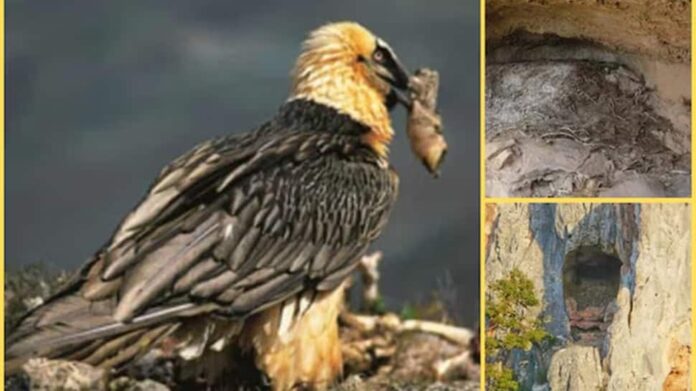650-Year-Old Treasure Nests: Spain’s Centry Old Treasure Nests: Scientists in Spain have discovered 12 ancient nests once inhabited by the Bearded Vulture (Gypaetus barbatus), a bone-eating bird of prey that disappeared from the region nearly a century ago. The research, led by Antoni Margalida of the University of Barcelona and published in the journal Ecology, reveals that these birds unintentionally preserved fragments of human history — acting as accidental archaeologists over hundreds of years.
Forgotten Homes
Between 2008 and 2014, researchers examined 12 of the 50 historical nest sites identified across the Spanish Pyrenees. They combined archival research — including 18th-century records and interviews with elderly locals — to pinpoint the exact nesting locations.
Add Zee News as a Preferred Source
Using stratigraphic excavation techniques similar to those in archaeology, the team carefully analyzed the contents of each nest layer by layer. Their findings show that Bearded Vultures often collected and reused human-made objects, unknowingly preserving cultural materials for centuries.
What Did Scientists Find?
Among the remarkable discoveries was a complete sandal woven from esparto grass, a traditional Mediterranean plant fiber used for centuries. Radiocarbon dating revealed that the sandal was approximately 674 years old, dating back to the 14th century.
These sturdy yet perishable sandals, known historically as “alpargatas” or “agobias,” were a hallmark of medieval craftsmanship in southern Europe.
Researchers also found a fragment of a woven basket from the late 18th century, indicating that the vultures reused nesting materials over time — sometimes integrating objects from entirely different eras into their nests.
How Nests Preserved History
The vultures’ nesting habits played a key role in preserving these fragile artifacts. They built their nests on rocky ledges and sheltered cliffs, often inside natural caves or overhangs with minimal exposure to weather.
These dry, stable environments prevented the decay of organic materials like grass, leather, and bone, allowing the objects to survive in remarkable condition for hundreds of years. Low humidity and constant temperatures in the Pyrenean caves acted as natural preservation chambers.
Crossroads of Ecology and Archaeology
The study highlights a unique intersection of ornithology, archaeology, and environmental science, demonstrating how wildlife behavior can contribute to preserving traces of human civilization.
According to the research team, such discoveries encourage greater collaboration between ecologists, archaeologists, and conservationists to understand the intertwined history of humans and wildlife.
Bearded Vulture Today
Once widespread across southern Europe, the Bearded Vulture is now considered endangered in the region. Conservation groups estimate that only about 309 breeding pairs remain across Europe, mainly in the Pyrenees, Alps, and Crete.
Efforts are underway to reintroduce and protect these birds through programs led by the Vulture Conservation Foundation and European wildlife authorities. The discovery of these ancient nests not only sheds light on human history but also underscores the importance of protecting this rare species and its natural heritage.

